Z Works Design Build installs Rainwater Collection Systems with Dripping Rainwater, LLC: http://www.drippingrainwater.com
In the Texas Hill Country development of new subdivisions has not slowed down. Many houses have their own wells and those folks have noticed that during droughts wells have gone dry and/or the water quality has gone down. How would rainwater collection be of any help? My family has lived on a total whole house 20,000 gallon rainwater collection system since 2002. If you run out of rainwater it is easy to have water trucked in for a couple of hundred dollars for 3000 gallons of potable water. Here is a basic potable Rainwater Harvesting system.
There are three major parts to a potable rainwater harvesting system: the collection area, the storage system, and the filtration system.
Metal roof is preferred although nowadays other roof materials can be used, including shingles and clay tiles. The sound of rain on your metal roof is beautiful when you know the water is going to your own water storage tanks! The amount of water one collects depends on the roof area available for collecting, available storage and amount of rainfall. One inch of rain gives 600 gallons of water per 1000 sqft of roof.
The Storage System
From the roof water goes through gutters and pipes to a first flush filtration tank which cleans out larger debris, leaves and bugs etc. This way you are sure that the water in the cistern is clean. For first flush you have two choises: One is a simple and effective fiberglass box with two 80 micron filters. It does require periodic (after each heavy rain) cleaning, but all owner/operators of a rainwater systems should be aware of maintaing the first flush equipment.
The second option is the ‘eliminator’. It
collects fallen leaves and debris off the roof at the bottom of a 400 gal. fiberglass first flush tank. Periodically, the tank is emptied through a drain at the bottom of the tank. (This water at the bottom of the tank is useful as compost tea.)
There are many choices for the big cisterns. They range from fiberglass to metal and concrete cisterns.
The storage tank is the most costly item in the whole system. So, one should be diligent about picking a tank that is appropriate for the application.
Location on your property, size of your family and water use, HOA rules as to what it should look like and the flow of gravity are some of the things that will affect the choice.
The Filtration System
Once you have water in the tanks, you are ready to pump the water into the house for your use. The filtration system is installed at the point of use. A pump is used to pull the water from the cistern and run through a series of filters before it is used as drinking water. Typically the system is comprised of a sediment filter, a three micron carbon filter and an ultraviolet light to purify the water. At this point the collected water is ready for any household use.
For our household use we have a Grundfos MQ pump that runs the water through a 5-micron sediment and a 3-micron carbon filter. Finally the rainwater passes through a UV light making it super clean and safe to drink.
This may sound complicated, but as the pictures show, it is a very simple sustainable step one can take to free oneself from the dependence of hard well water in the Texas Hill Country area. Once you taste rainwater you realize what you were missing.
The maintenance of the system is fairly easy: Clean or drain the first wash system after major rain events, replace the sediment and carbon filters plus the UV light bulb according to the manufacturers or installers recommendations.
I change my sediment filters every month and charcoal filter every 3 month. The UV light bulb lasts about 12-14 months.
Having been an owner of a well here in the Texas Hill Country, the maintenance of a rainwater system beats hauling the salt pellets from the store on a monthly basis to make the well water softer and then using RO to make it drinkable any day.
At the end the most satisfying thing to watch is the overflowing cisterns after big rains.

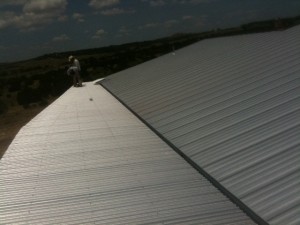


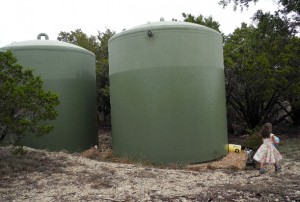
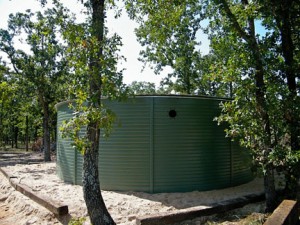
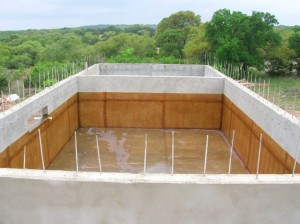
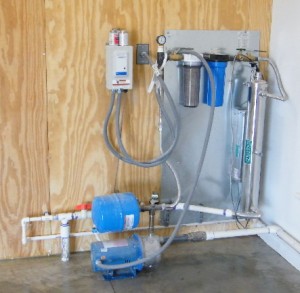
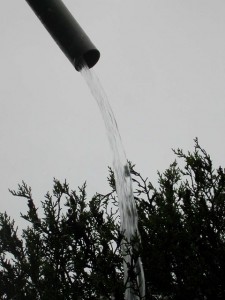
Peggy Wagner
You can really put your rainwater collection in the foundation of your home? Details please?